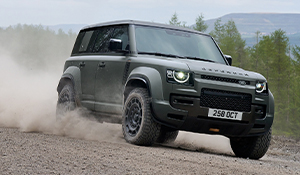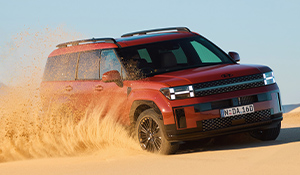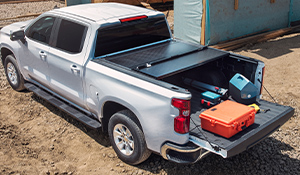REVIEW - 2020 SUBARU FORESTER HYBRID S
Words and photos: Robert Pepper via https://practicalmotoring.com.au/
The Subaru Forester is a medium-sized five-seat SUV that manages to stand out in what is a very crowded market by virtue of its longevity, actual offroad capability, full-time all-wheel-drive powertrain of which Subaru is justifiably proud, safety features and excellent resale. Our test car is a mild hybrid, which means it has a small battery that is recharged by the car when the petrol engine has the power to spare, and when decelerating – it’s not a plug-in hybrid (PHEV) that has a battery you can charge separately. Other than the hybrid drivetrain, the Forester is pretty much identical to its petrol-only powered stablemates.
There are two Hybrid models, the L and top-spec S which we have on test for a few days, with what we could do limited by COVID-19 restrictions, so we’ll look to do a more comprehensive test another time. The extra equipment the S gains over the L is a driver monitoring system, automatic seat adjustment, upgraded speaker system, electric sunroof, 8″ infotainment system, leather-accented seat trim, powered tailgate and 18-inch alloy wheels over the L’s 17-inch.

What does the Subaru Forester Hybrid S cost and what do you get?
The Recommended Driveway Pricing for L and S models is:
Subaru Forester L (non-hybrid) – $41,726
Subaru Forester L Hybrid – $44,866
Subaru Forester S (non-hybrid) – $47,966
Subaru Forester S Hybrid – $51,116
That’s a premium of over $3000 for the Hybrid Foresters, and that’s purely the drivetrain, plus pedestrian recognition over the standard car’s AEB. Like all Foresters, the Hybrid drives all four wheels, all the time, which is what Subaru call Symmetrical All Wheel Drive, as distinct from most SUVs which drive the front wheels and only kick in the rear wheels if traction loss is detected. The electric motor works in one of three ways; disengaged entirely so pure petrol power, pure electric power and no petrol, or both in concert with each other. When that happens, the engine and electric motor drive all four wheels, all the time.
There’s keyless entry, a lot of active and passive safety equipment, and some unusual features too. The car can memorise up to five birthdays and anniversaries and remind you, which is lovely, but don’t we have phones for this? There’s a keyless, and I mean literally keyless entry function – you can program the car so a sequence of presses on the boot release button form a six-digit code and it unlocks. And there are Eyesight forward-facing cameras for things like AEB and adaptive cruise control, but it also has a camera looking at the driver. Using facial recognition technology it can recognise one of five drivers, and then adjust everything to suit from the seating position to music, phone connection, reverse tilt on the wing mirrors and more. And if you have something heavy on the back seat, the car will remind you to look there when you switch it off. Love that feature!

What’s the Subaru Forester Hybrid interior like?
There are lots of practical touches such as hooks for luggage, 12v and USB sockets including two in the second row and one in the boot which has four strong, sensibly position tie-down points. The second row folds semi-flat with a 40:60 split, and as usual with Foresters, the middle-row seatbelt point is located in the roof, which tends to get in the way when the car is loaded. The tailgate is power-operated, and there’s electric adjustment for both front seats with heating. At the back of the front seats are dual seat pockets, and the bottom one is split into two, much better than the usual single pockets.
The switchgear isn’t all that well thought out, somewhat overly complicated and confusing – for example, the trip reset button is hidden near the steering column, you use the cruise control to scroll through some menu options, and there’s a lane-keep safety function button in the roof. As usual these days there’s Apple CarPlay and Android Auto. Some of the trim isn’t top-quality, feeling a little tacky, but once you get used to it the Forester is a pleasant and practical enough place to be.

Is the Subaru Forester Hybrid good to drive?
Around town, the Forester is adequately powerful but doesn’t have the electrically-improved zip you’d expect from a modern hybrid, and on occasion, the restart of the petrol engine can be a little too slow. Grip is always in abundance, and the seating position is relatively high with superb visibility all round. Ride is supremely comfortable, speedbumps don’t really matter, and sharp driveway approaches are never a problem. The car hardly ever runs purely in EV mode – you need to be ever so gentle when pulling away not to have the petrol engine kick in. It often doesn’t even switch the petrol engine off even when warmed up and slowing down.
Into rural roads and it has to be said the Forester is not exactly a straight-line powerhouse, not helped by the CVT transmission which simulates gearshifts but lacks the feel of a conventional automatic. There’s an S mode, but that just sharpens the throttle so slightly it makes no real difference. At least braking and handling are above-average though although steering lacks a little feel, and it’ll just eat up whatever road surface you point it at. That includes dirt roads, where it absolutely shines. The suspension, clearance and all-drive system give the Forester a poise and control on dirt roads that is unrivalled in its class and the envy of bigger 4WDs, it just grips and goes, true to Subaru’s rally heritage. I just wouldn’t mind another, say, 150kW to play with.
The good news continues into offroad territory, where you’ve got X-MODE which reconfigures the car’s electronics for rough terrain. There are two modes: Snow/Dirt for slippery surfaces, and Deep Snow/Mud for softer surfaces where the car might sink in, and I would expect that should include sand.
I wasn’t able to fully test X-MODE, but the limited test I did indicates it is an effective system, sharpening up brake traction control, relaxing the wheelspin control and disabling electronic stability control – combine that with the all-drive system and you have yourself perhaps the most capable softroader on the market. There’s also a hill descent control function (HDC) which is automatically enabled in X-MODE but sadly I can’t see any way to manually engage or disengage it – you don’t want HDC operating in sand, for example. The manual claims it is possible to pull away in second gear, useful for very slippery conditions, but the reality is the car won’t.
My previous tests of CVT Foresters offroad have highlighted transmission overheating issues after prolonging low-speed work, and I was wondering if the same would be true of the Hybrid, given it has an electric battery to help at low speeds. However, I was unable to conduct sufficient testing to conclude one way or the other.

How safe is the Subaru Forester Hybrid?
Very safe indeed. Being a Forester, it has a 5-star ANCAP rating scoring a high 35.64 out of 37. Subaru has packed in a lot of safety features, such as driver monitoring, lead vehicle start alert, brake light recognition, distraction warning, high beam assist, front/rear sensors and cameras, and a side camera only on the left. There’s also a very good blind spot monitoring system, lane departure warning and lane keep assist, along with adaptive cruise control and AEB. The Hybrid also gets pedestrian detection.
There’s three child restraint points, located sensibly on the back of the seat, and two sets of ISOFIX anchor points. Even in this crowded market segment, you won’t find a safer vehicle. Even the all-wheel drive system is a safety feature, as the car grips the road better than anything that doesn’t have a race-spec roll cage. And of the active safety that I could test, such as the adaptive cruise and lane safety systems, it all works above-averagely well. Didn’t test the crashworthiness though. There’s also TMPS (tyre pressure monitoring system) with three settings for Normal, Loaded and Towing. The switch location is odd, requiring the glovebox to be opened, and there’s no readout of the current pressure.

Should I buy the Hybrid version of the Forester?
I can’t think of any reason to buy the hybrid over the normal Forester, and a lot of reasons why not. The Hybrid is slower, heavier, lacks a spare tyre, and costs a lot more. It uses fractionally less fuel – 0.7L/100km – but that’ll take you around 280,000km to break-even considering the $3000+ price difference, and the fuel tank is only 48L compared to the standard car’s 63L so you can’t travel anywhere near as far on a fill even allowing for the electrical assistance. The braked tow rating is 1200kg vs 1500kg for the non-hybrid Forester. There’s no control over the electric battery, no EV mode, no plug-in capability, and even the 12v battery is a special unit from Subaru.
As a comparison, the Toyota Corolla ZR Hybrid costs only $1500 more than the normal ZR and uses 1.8L/1km less fuel, so it pays off in a reasonable 50,000km, within the average lifespan of a car’s first-own life, and Toyota ask only an about an extra $1000 for the hybrid Camry SL which offers a fuel consumption improvement from 8.3 to 4.5L/100km, paying it off in 16,000km.
For the Forester Hybrid to make sense it needs to improve on the Forester’s fuel consumption by at least 3L/100km, be priced within $1500, and offer some proper control over the battery such as an EV mode, driver-controlled battery charge, and performance equal to or better than the normal car. Looking upmarket, the Range Rover Sport PHEV also has a 2L motor, but is an absolute rocketship and that’s in a car which weighs north of 2500kg. This Forester Hybrid is very much a first-generation approach, but carmakers should be past that learning curve in 2020.

What are the Subaru Forester Hybrid alternatives?
The Mitsubishi Outlander PHEV is an SUV of around the same size, costs around $51,000 driveaway and also has some offroad capability. Being a PHEV, it has a much bigger battery, can be charged separately from a wall socket and has a claimed range of 54km in pure electric mode. Comparing the two on pure electric-mode value and practicality, I’d suggest the Outlander would be a far more sensible eco-vehicle than the Forester Hybrid if you want a hybrid SUV, and it’s not a lot more expensive than a diesel Forester. There’s also its natural un-plugged rival, the Toyota Rav4 Hybrid.
The bottom line
The Subaru Forester is a great car, but unfortunately, the model's first hybrid doesn't deliver anything of benefit, in fact, it only serves to hinder what is otherwise a terrific package.










